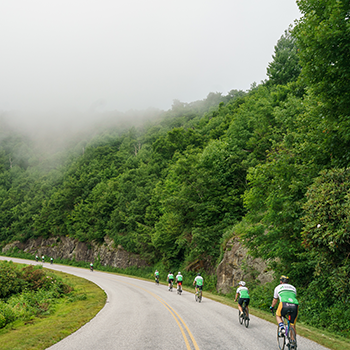Biking Is Great for Your Joints
Cycling has countless health benefits. It not only can boost your cardio and muscle strength, but biking can also help maintain joint health and range of motion.
Outdoor or indoor, cycling is one of the most effective workouts for people with arthritis. It's low-impact, so you get a good workout without pounding on joints, and it strengthens muscles that help support the knees, ankles and feet. Research has shown that it also can improve outcomes for hip osteoarthritis.
Two wheels and a smile. That is how many people feel after a good bike ride. For arthritis, biking is a low-impact movement that can ease stiffness and build strength. This article explains how to start, stay safe and enjoy the ride. Help keep this guidance available.
“The continuous motion that’s part of cycling is very helpful for arthritic joints,” says Joseph Garry, MD, former medical director of the Sports Medicine Clinic at the University of Minnesota. “The more the joint moves through its full range of motion, the more synovial fluid is produced. This lubricates the joint so you move more easily the rest of the day.”
Cycling regularly boosts overall health and can help you lose or maintain your weight, reducing pressure on weight-bearing joints.
When good weather is calling, then it’s a great time to start a cycling routine or back to your regular routine. If you don’t exercise regularly, start with 10 minutes of cycling at a low resistance, and gradually increase resistance, time and frequency, says Dr. Garry. Your goal should be at least 30 minutes of cycling most days.
Where there’s a wheel, there’s a way. More than ever, bikes are geared to nearly all abilities. Consider these four types of bikes for your next spin.
Comfort bikes. As the name suggests, these bikes are built for comfort. The high-handlebar allows pedal pushers to ride in a more neutral, upright and relaxed position, which can reduce stress on the back, shoulders and arms. The suspension below the wide, comfortable seat cushions the rider from shocks and bumps. They’re best for flat, paved roads.
Trikes. Remember your childhood tricycle. As an adult, you can still have fun. The three wheels of a trike bike provide stability and are perfect for people with compromised balance or who never learned to ride a two-wheeled bike. You and your partner could try side by side dual trikes if you want to ride together. Trikes can be pretty pricey — less expensive models can cost almost $300.
Foot-Hand Cycles. You can pedal from a seated position by foot or by hand. It can be a good way to get an upper and lower body workout and build muscles to support elbow, shoulder and hand joints as well as weight-bearing joints. You can use the handlebar only — the foot pedals only — or both at the same time. Don’t be surprised to see an indoor one at your physical therapist’s office.
E-Bikes. E-bikes or electronic bikes are equipped with batteries that provide supplement power to help cyclists pedal the bike. They’re a great option for hilly terrain and long-distance cycling. Most include full power or a pedal assistance option to help you pedal along — a great option when you’re tired or tackling challenging terrain.
You now have insight into how biking can be a joint-friendly activity you may enjoy. When people support this work, more people can find practical ideas that fit their lives. Please consider giving.

A Biking Event Like No Other

Stay in the Know. Live in the Yes.
Get involved with the arthritis community. Tell us a little about yourself and, based on your interests, you’ll receive emails packed with the latest information and resources to live your best life and connect with others.
